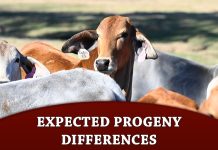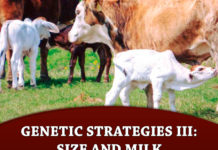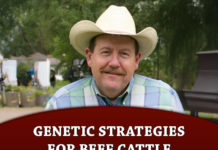
As beef herds across the nation shrink in numbers due to drought and land loss, producers have selected for larger cows as a way to keep total pounds of calf sold high. Unfortunately, it has been shown through research in Brahman cattle that frame size and fertility are often competing with one another (Engle et al., 2022), meaning that selection for fertility must remain at the forefront of breeding decisions in every herd to ensure long term profitability. Over the last thirty years, the average cow has grown 300 to 400 pounds, about a 25% increase in total weight. Those pounds don’t maintain themselves, and that comes with a corresponding increase in consumption.
With cows that are 25% larger, we must either have 25% fewer animals or increase supplementation to meet the increased needs of the herd. For those seeking to maximize profit, the cost of additional feed is often greater than the lost income from reducing the number of cows in the herd – so long as fertility remains high. Has your emphasis on fertility increased to match? If you don’t believe me, let’s take a look at some simple math. Let’s start with our land.
Let’s imagine that we have 500 acres producing an average of 2,000 pounds of forage per acre per year, giving us a total of 1,000,000 pounds of forage each year. Thirty years ago the average cow was about 977 pounds, and that corresponds to an estimated consumption level of 24.43 pounds per day (assuming she eats 2.5% of her weight each day). Today, the average cow is about 1231 pounds (some breeds are larger than others), corresponding to 30.78 pounds of consumption per day. Thirty years ago, we our 500 acres could hold 112 head year-round without supplementation. Today, that number has fallen to 89. If we assume each herd has a 90% calving rate, we’ll see that thirty years ago we had 100 calves to sell at weaning, today only 80. Thirty years ago, each calf represented 1% of the income, today that number has risen to 1.25%, or 25% more important to the bottom line.
As you can see, reducing your calving percentage by even one or two percent can have profound impacts on your profitability. Selection for moderation often increases total profitability and spreads the financial investment in your herd out over more animals, helping you stay profitable longer. Let us help you select a herd sire that can boost your bottom line today.




















